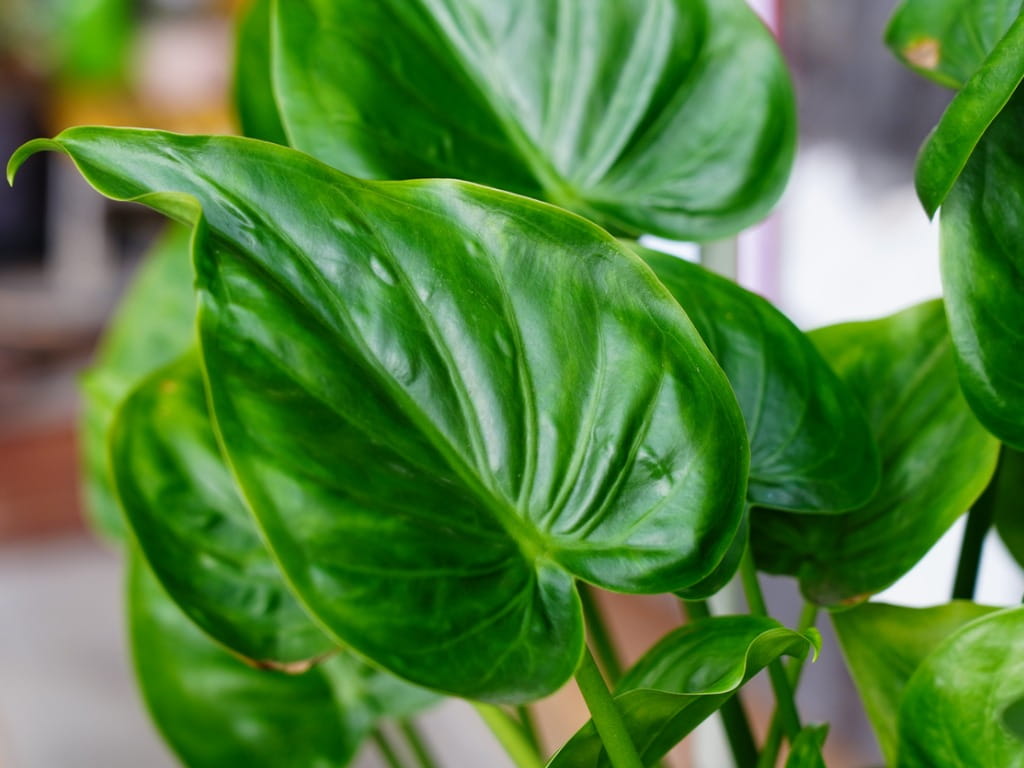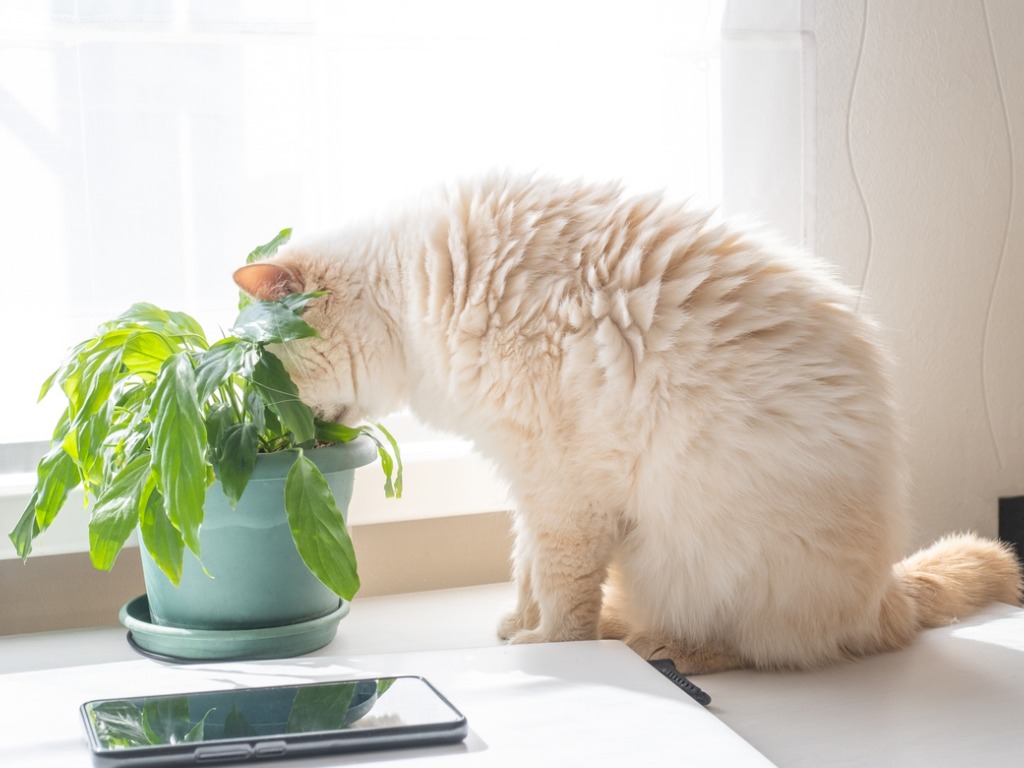Are Plants in the Alocasia Genus Poisonous?

The Bottom Line
Alocasia plants make stunning houseplants, but they can be harmful if the plant material is chewed on or swallowed. These plants contain oxalate crystals that can cause mouth pain, nausea, vomiting, and diarrhea. They should be kept away from children and pets.

The Full Story
Alocasia species, also known as elephant ears, are fast growing, ornamental plants that don’t require much watering. This makes them an easy addition to any plant lover’s collection. These plants have broad leaves resembling elephant ears (hence the name) and can grow anywhere from 1 to 12 feet tall! Although they are very beautiful, Alocasia plants can be harmful when mishandled.
All parts of the plant contain tiny calcium oxalate crystals. If any part of the plant is chewed it can cause irritation to the lips, mouth, tongue, and throat. Although rare, nausea, vomiting, diarrhea, and difficulty swallowing have been reported after ingesting plants with oxalate crystals. The symptoms generally develop quickly after exposure and can last for up to half a day. Other popular houseplants that contain calcium oxalate crystals are Dieffenbachia and Philodendron.
In spite of the calcium oxalate content, a few varieties of Alocasia serve as a staple food for more than 400 million people. There are several preparation methods that are claimed to decrease the calcium oxalate content of the starchy stems of these plants. However, none of these preparation methods are guaranteed to decrease the oxalate content, and eating the starchy stems of these plants can still cause injury resulting from exposure to the undissolved oxalate crystals.
If someone is exposed to an Alocasia plant, you can help them by following these steps:
- Gently wipe out their mouth.
- Have them rinse and spit with water to remove any visible plant material from their mouth.
- They can drink a few small sips of water to rinse the remaining material into their stomach.
- If their mouth is irritated, sucking on ice chips or frozen treats may relieve pain.
- If they are experiencing nausea or vomiting, keep them hydrated with small sips of clear fluids.
If you suspect someone has been exposed to an Alocasia plant and is having a problem, get an immediate personalized recommendation online or call Poison Control at 1-800-222-1222. Both options are free, confidential, and available 24 hours a day.
Lindsy Liu, PharmD
Certified Specialist in Poison Information
Poisoned?
Call 1-800-222-1222 or
Prevention Tips
- Have a knowledgeable expert identify the plants and trees growing in your home, backyard and neighborhood, so you know which ones are harmful and which ones are ok for children and pets.
- Consult our helpful plant guide
- Call your local plant nursery to see if they can help you identify samples of plants
- When working with Alocasia plants, cover as much skin as you can to limit exposure to oxalate crystals.
- Keep all plants out of reach of pets and infants.
- Tell children that no part of a plant should be played with or eaten.
This Really Happened
Case 1. A family called Poison Control after an 11-year-old boy bit into an Alocasia houseplant. He reported that his mouth was itchy. His symptoms lasted for approximately 1 hour and were soothed after eating yogurt.
Case 2. A 36-year-old horticulturist called Poison Control after dew from an Alocasia plant got onto his skin and into his mouth. He rinsed his mouth well and showered after the exposure. He developed minor lip swelling that resolved in less than 24 hours.
For More Information
Alocasia macrorrhizos (giant taro). Wallingford (UK): CAB International [cited 2022 Feb 24].
Pang CT, NG HW, Lau FL. Oral mucosal irritating plant ingestion in Hong Kong: epidemiology and its clinical. presentation. Hong Kong J Emerg Med. 2010;17:477–81.
References
Alocasia macrcorrhizos. Dawlish, Devon (UK): Plants for a Future [cited 2022 Feb 21].
Poisoned?
Call 1-800-222-1222 or
Prevention Tips
- Have a knowledgeable expert identify the plants and trees growing in your home, backyard and neighborhood, so you know which ones are harmful and which ones are ok for children and pets.
- Consult our helpful plant guide
- Call your local plant nursery to see if they can help you identify samples of plants
- When working with Alocasia plants, cover as much skin as you can to limit exposure to oxalate crystals.
- Keep all plants out of reach of pets and infants.
- Tell children that no part of a plant should be played with or eaten.
This Really Happened
Case 1. A family called Poison Control after an 11-year-old boy bit into an Alocasia houseplant. He reported that his mouth was itchy. His symptoms lasted for approximately 1 hour and were soothed after eating yogurt.
Case 2. A 36-year-old horticulturist called Poison Control after dew from an Alocasia plant got onto his skin and into his mouth. He rinsed his mouth well and showered after the exposure. He developed minor lip swelling that resolved in less than 24 hours.
